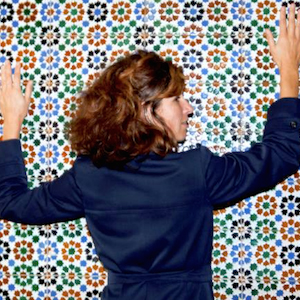Inspiration for Nicolas Karakatsanis’ Disgracers comes from a series of paintings depicting falling figures, made in the late 16th and early 17th century by German-born Dutch artist Hendrick Goltzius. The Brussels photographer and cinematographer, who credits include the Oscar-nominated I, Tonya and Rundskop (Bullhead), became mesmerised by Goltzius’ work a long time ago, when he saw an exhibition of his work at The Met in New York.
The title of his Disgracers series and the images of falling people seem to betray a certain narrative – is there something Karakatsanis wants to tell us? ‘The series might suggest a certain red thread, but I didn’t intentionally insert a narrative. You know, as a cameraman making movies, I am surrounded by stories every day, so I’d rather my images speak for themselves. The visual can be beautiful and emotional in itself. When I visit an exhibition I look for beauty in the first place. And that’s what I hope to share through my own work too: an experience of beauty. The images are open to interpretation – even though they’re emotional, and made with a lot of gut feeling.’
Through a certain photographic approach, specific lighting, and a dedicated printing technique, emotion and beauty are passed on. ‘I like to play with paper types and lighting. Thus the photo will not be a flat thing but rather a 3D experience.’ Karakatsanis’ sophisticated techniques also ensure that his photographs look like paintings. It comes as no surprise that for years he has been collaborating on films with Belgian painter Michaël Borremans. The two became friends, and their enthusiastic relationship of mutual influence reveals the obvious love they have for each other’s medium. ‘The way Michaël plays with depth and sharpness in his work is rare for a painter, and is clearly inspired by photography. Just like I am very inspired by painting. Our mutual inspiration happens in a very organic way.’
Karakatsanis is also a fan Manet’s work: ‘Especially of his portraits. Manet painted a whole series of people in a studio environment, with sober lighting and a brownish background. It’s fascinating how he takes those people out of the context. This gives these portraits a universal value, which appeals to me. In photography you usually see a very concrete world unfurling, and that context means you have to make an effort to identify yourself with it. It interests me to create a more universal image in my photography through technology. Images that are very catchy but have been taken out of context so they can appeal universally,’ says the photographer, who chose to only make single editions of his Disgracers series. As the Gallery says, don’t go looking for hashtags to share, if you want to see them all, you’ll just have to go to Alice Gallery in Brussels. And you have until 6th of May to do that.


